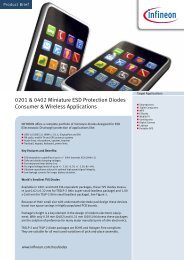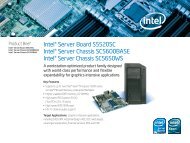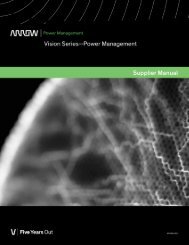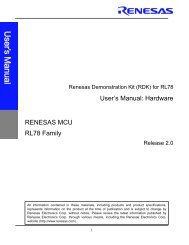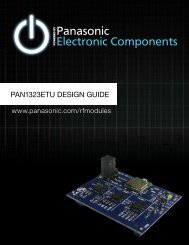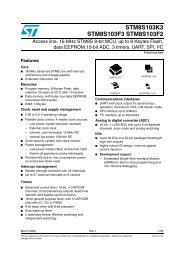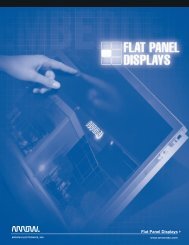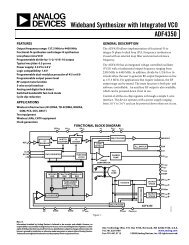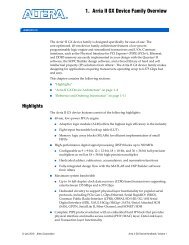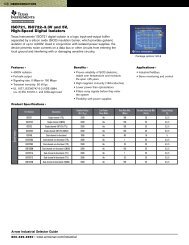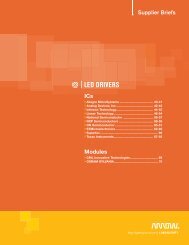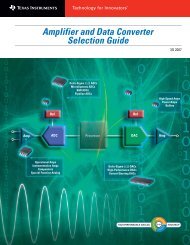Medical Applications Guide (Rev. B - Mouser Electronics
Medical Applications Guide (Rev. B - Mouser Electronics
Medical Applications Guide (Rev. B - Mouser Electronics
You also want an ePaper? Increase the reach of your titles
YUMPU automatically turns print PDFs into web optimized ePapers that Google loves.
66➔<strong>Medical</strong> ImagingDigital X-Rayblocks in the system. They must have an enable pin and synchronizablefrequency to avoid crosstalk with other blocks in the acquisition chain.The number of pixels of the FDP will influence the number of ADCchannels vs ADC speed. Static or dynamic acquisition also determinesthe ADC speed. While static acquisition means a single image in lessthan 1s, dynamic means an image is refreshed at 30Hz, for morespecific cardiovascular, fluoroscopic or related applications whichrequire much faster data conversion with the same number ofchannels. An ADC in the range of 2MSPS and more, with excellentDC performance, will be suitable.The main metric for image quality is “Detection Quantum Efficiency”(DQE), a combination of contrast and SNR, expressed in percentage.Higher the contrast and lower the noise, higher is the DQE. Contrastis the number of shades of gray, determined by the output resolutionof the ADC. Generally, 14-bits or 16-bits will be suitable for theapplication. SNR indicates not only SNR from the ADC, but systemSNR where x-ray dose, pixel size and all electronic components arecontributing. SNR can be increased by increasing x-ray dose, increasingphotodiode spacing and decreasing noise from the electronics.Increasing the x-ray dose is not suitable for patients or operators.Increasing photodiode spacing may also not be suitable, because thisdecreases spatial resolution. Decreasing the noise from electronicsin the system is the main challenge. The total noise in the systemis root-Square-Sum of all noise contributions over the signal chain,assuming all are uncorrelated. This means that all parts have to beultra-low noise or heavily filtered when applicable. These includeADCs, op amps and references. Stability over temperature is yetanother important challenge. Internal temperature increase dueto power dissipation may offset gray levels and distort the imageespecially during dynamic acquisitions. Hence, temperature stabilityof ADCs, op amps and references should be high.Key ProductsAcquisition chainTI’s fastest 16-bits SAR ADCs, with differential inputs:• ADS8422: 4MSPS (serialized parallel output)• ADS8413: 2MSPS (LVDS output)• ADS8412: 2MSPS (parallel output)Serialized LVDS saves FPGA I/Os and EMI, but on the other handadds power dissipation to the ADC.High-speed low-noise op amps:• THS4130/THS4131 (with or without shutdown)• THS4031/THS4032, single or dualBiasing chain12-bit and 16-bit multiplying DACs:• DAC8811: 16-bit, single• DAC8812: 16-bit, dual• DAC8814: 16-bit, quad• DAC7811: 12-bit, singleLow-noise precision amplifiers:• OPAx211• OPAx227• OPAx277Low-noise precision references:• REF50xx• REF02<strong>Medical</strong> <strong>Applications</strong> <strong>Guide</strong> Texas Instruments 2Q 2007



